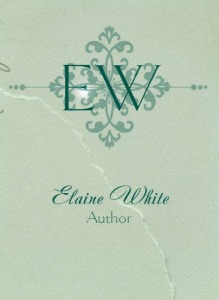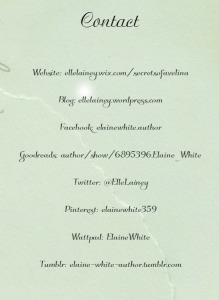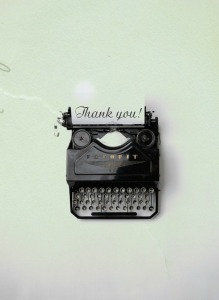Every author should have a portfolio of work. Whether this is just a website or an extensive paper form, there are really cheap ways to do this, that still look profession. Why is it important? Because your readers need a way to view your work and get to know you. Also, it's good to keep in mind that a lot of people don't have Facebook, so try to make yourself available on as many avenues as possible.
Today, I'm going to talk about a paper portfolio. This is great for book signings or just something to carry in your bag, for those moments when you're asked about your work. It's so much easier to get someone interested in your books if they can see a cover or read a blurb, immediately than it does to show them a business card. Inevitably, they get shoved in a pocket/bag and forgotten about. Visually, it's harder to forget a great cover or a phrase from a blurb that intrigued you. People are, scientifically, more likely to remember something they see than something they're only told about.
~
My recent project was to take one of those booklets that come with collectable cards and turn it into a portfolio.
How? Well, it's pretty easy. It does take up a lot of paper (plain or photo - your choice) and lots of printing, but it's well worth it. Plus, you end up with a visually pleasing booklet of your work, that is protected from damage, greasy/dirty fingers and wear and tear.
I got mine recently, from the Minions explosion that's been happening. It was easy to pick up the "starter pack" which was a magazine, with cards and the binder. I did this for the binder, because it's cheaper to pay £4-£5 for this starter pack than to try to find one available elsewhere. These packs are aimed at kids, with pocket money, while individual items are aimed at adults who make a wage. Unfair, but true. Plus, you can gift the rest of the pack to a family kid, so it's not a total waste. (You can buy these in most newsagents/news paper stores, especially supermarkets, at the magazine section)
~
After buying your pack, it's a simple matter of taking measurements. I measures the Minions insert, for the front cover and the size of one of the cards, for the inserts inside. As it's designed for individual cards, you can actually fit +250 inside one book. This is great, because my plan is to make 1 card for the series/book with the blurb on it, then one card with the book cover. When you don't have much to put in it, you can fill the back with extra business cards (to hand out), character cards and extras, that are all easy to fit in the slots, for those emergency moments.
So, the measurements for this Minion pack are as follows:
Front/Back Cover = W: 14cm H: 19.2cm
Inserts = W: 6.2cm H: 8.8cm
I'm sticking with this, as this allows some wiggle room on either side as well as being accessible if they need changed or rearranged. I'm also arranging mine my series, as there's so much space.
If you're using another size of folder, you can convert to pixels (which Picmonkey uses for size) here at Unit Conversations.
~
Phase 1: Front and Back covers
The front cover will be simple: my logo, with a background of some sort, on the front. On the flip side, will be my bio. The back cover will be similar: an image related to me or my writing, then on the flip side, a list of all my books. These two pages can be updated as and when needed.
Example:




~
Phase 2: The guts.
For this, I'll be making one Blurb for each solo novel or for each series. Then I'll make one card for each book cover in that series or for that novel.
Example:
I have to print, to check that the writing can be read on the blurb. But, the great thing is that it's easy to fix.
~
Phase 3: Insert into Doc
The easiest and simplest way to print these is to insert each into a word document. Keep them at their natural size, but if they change, it's easy to right click each picture, to re-set the size to the above measurements.
~
Phase 4: Print
You can do this on photo paper (for that clear, crystal, professional look) or on plain paper. As this will be an every day item, for events, hopefully manhandled a lot, and in a protective cover, the choice is totally up to you. You can be economic, in using plain paper, knowing that you might have to update it a lot or that it might get dirty. Or you can go all out with the photo paper for a sturdier book.
~
Phase 5: Share!
Take it with you everywhere. The size of this little book makes that easier on you, since it's not a massive A4 folder. Even if it's just to have those extra character cards or business cards on hand, it will always come in handy.
Enjoy!



No comments:
Post a Comment